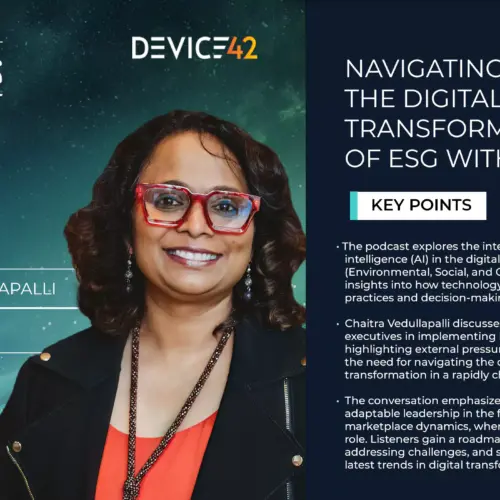What is DCIM?
DCIM means many things to many people, and often different things depending on who you ask. Sure, many know it stands for Data Center Infrastructure Management, but in the context of every business, the use case and what the “idea” of a DCIM system means to each is often unique.
Industry experts at TechTarget define DCIM as follows: “Data center infrastructure management (DCIM) is the convergence of IT and building facilities functions within an organization. The goal of a DCIM initiative is to provide administrators with a holistic view of a data center’s performance so that energy, equipment and floor space are used as efficiently as possible.”

All DCIM is Not Created Equal!
There are many tools that offer “DCIM”. Some vendor’s DCIM solutions are heavily focused on ‘outside plant’ features (net Terrain OSP, for example). For example, municipalities are often concerned with sewer and water distribution plumbing – for their a town, city, or even an entire State! Similarly, the electrical company documents wiring, but from generation plant to sub-station to individual customers, and an entire network of wire that supports it all. This aspect of DCIM is known as “outside plant”, and it too includes fiber optic cables, and even microwave connections that don’t physically exist.
“There is an interest in DCIM and a different solution offered to customers that range from municipalities, to utility companies, to data center hosting providers, and anywhere in between.”
As an example, think about the needs of an HVAC or plumbing contractors that work in data centers. To them, DCIM might include the air conditioning systems, CRAC units, plumbing connections, and the supporting equipment in those rooms. For those that rent that same building, or host a data center for rent, however, those are the areas of DCIM they are least concerned with [“that’s facilities problem”]. Their interest and focus more often lies in the temperatures in front of the racks (in the cold aisles) and behind the racks (the hot aisles), and that temperature delta. To hosting providers, measuring power consumption is key, while to the HVAC company, it may be of no concern; yet DCIM can and often does include both.
It’s wise to look at a vendor’s current customers and core feature list to ensure you don’t get the “wrong” DCIM. If you are looking to document your Rack elevations, choose your vendor wisely, or you could end up with a DCIM system that is meant for a gas distribution system!
The Evolution of DCIM
First-generation DCIM systems were built to handle the tracking and documentation of the physical aspects of data center deployments (tangible assets).
In fact, for many, hearing the acronym “DCIM” often brings to mind software geared towards documenting physical devices and their attributes (if not Excel spreadsheets and Visio Diagrams) – In other words, The things that can be touched:
|
||
|
|
|
|
|
|
There’s a good reason for this line of thinking: Many who started out in the IT Industry first documented their room and rack layouts using Excel, but as their technology portfolios grew, the tools used for data center management needed to evolve to keep up with the sprawling infrastructure growth and increasing complexity.
|
Modern DCIM systems like Device42 feature easy-to-use, photo realistic, drag and drop rack layouts with customizable rack elevation tracking. [left] Meanwhile, power utilization tracking and rack capacity views are integrated right into Device42’s room layout views. [right] |

Drag and Drop Rack Elevations |

Drag and Drop Room Layouts |
Rack Elevations and more
Modern DCIM systems like Device42’s, for example provide all the features you’d expect in DCIM systems described so far, with a twist: Device42 rack elevations are customizable to track increasing rack capacities with differing numbering [some start at 1, others at 0, some are top to bottom, some opposite] schemes from different vendors. While rack elevation tracking and visualization features got more sophisticated (and no less important), DCIM systems also evolved beyond documenting simply room, rack, and patch panel layouts, and began offering a more holistic view of what was fast becoming more than just a physical infrastructure. In fact, the physical layout was fast becoming a facade for a much more complex web of virtual infrastructure and interdependencies.
When it came time to grow or migrate these fast-growing, complex and heavily virtualized infrastructures, DCIM tool vendors were asked to provide features to allow layout planning not only for new rooms and rack elevations, but also “what-if scenarios” to find space to deploy new equipment as well as to locate spare capacity on existing equipment, and balance existing virtual server capacity. Thus, DCIM systems hybridized to include both power requirements and availability information for the servers for both existing and hypothetical rack layouts.
As many of these units offered environmental data, monitoring temperature was a natural outcrop, and DCIM systems have since concerned themselves with the climate situations around the racks they document, as well as the power flowing to them. Some systems even extended DCIM to integrate with and control the control the climate systems based on that sensor data.
Technology, however, hasn’t stopped evolving. Today’s software not only includes photo-realistic rack elevations with drag and drop patch panel and room layout views (including color coded power usage and capacity visualizations). Servers go well beyond simply physical infrastructure today — and so far, DCIM has hybridized to extend existing and add new features, doing everything possible to keep track of the rapidly changing technological landscape!
Modern DCIM: Beyond the Physical
Modern DCIM has evolved to mean much more than “data center infrastructure management’ and its original definition might lead one to believe. Software in the DCIM class often plays an important role to many businesses in today’s technology driven world, and many of the tools that offer DCIM functionality provide features that go well beyond the physical. Any serious contender in today’s DCIM market handles virtual assets natively, and many go even deeper and can provide details about the software and services running on those assets.
Companies in more and more industries have come to rely on tools in the DCIM family, as well. This is because technology has become an important tool for doing business across all industries. As a matter of fact, successful businesses today are so reliant on technology that many are beginning to think of themselves as technology companies first, and whatever else they do second.
Try as we might to avoid it, if you are a growing company, it’s almost certain your IT assets are growing, too. Modern DCIM is about intelligently dealing with this fact, and making sense of the data that comes along with it – and that’s why DCIM is more than just power and temperature (though those are included).
Along with power and environment, modern DCIM tools document and provides valuable insights into your growing technology holdings, including:
|
|
|
|
DCIM’s New Role: Answering the Harder Questions
With all the features and use cases that modern DCIM tools like Device42 fulfill, they deserve a new moniker. We refer to the modern generation of DCIM software, like Device42, as “SST’s”, aka a “Single Source of Truth” for your datacenter. An SST like Device42 self populates (autodiscovers) and self-updates itself with accurate data as you make changes to your infrastructure.
Once you have your SST up and running, complete with up-to-date IT infrastructure data, answering the harder questions like “Where do I have space for 100 more servers?” and “Which subnets and VLANs have the space for those servers, plus enough spare bandwidth on the backbone connection to support the load?” become second nature. In fact, companies all over the world rely on the data stored in DCIM / SST systems for a variety of powerful features, which support many use cases:
|
|
|
With Device42, viewing the existing free rack, room, and even subnet capacity is easy as glancing at the color-coded heat maps and other powerful visualizations. What-If scenarios provide the ability to quickly and try out placement scenarios, while powerful asset management and parts tracking features included in a well-rounded DCIM tool like Device42 make tracking all the spare parts that keep a mission-critical datacenter up and running 24/7 possible, including handling transfers of parts between datacenters, as often happens with unexpected, emergency parts failures (and they’re never exactly expected).
Greater Than the Sum of the Parts
A well rounded DCIM tool like Device42 provides value that extends far beyond the typically considered walls DCIM tools are often constrained by. Power, Environmental, and Space management are important, and do indeed play a role in managing a datacenter. But as they only focus on a small part, they too only tell part of the story.
Management of the modern Datacenter requires a modern DCIM tool: A Single Source of Truth. From integrating with your ITSM system to simply link the asset to the trouble ticket it concerns, to a powerful RESTful API and webhooks as featured in Device42 to work with and even drive the automation that power the datacenter of today, helps plan and manage the digital transformation that transitions you to your future datacenter, and then continues to provide valuable, actionable insight in your datacenter of tomorrow.
Still relying on outdated Visio diagrams for rack elevations?
If you are still relying on outdated Microsoft Visio diagrams for rack elevations, we think you should take device42 for a spin. Go to device42 download page to get a 30-day free trial and see for yourself on how you can simplify your data center management.
Current users can grab the update file here: /update/



